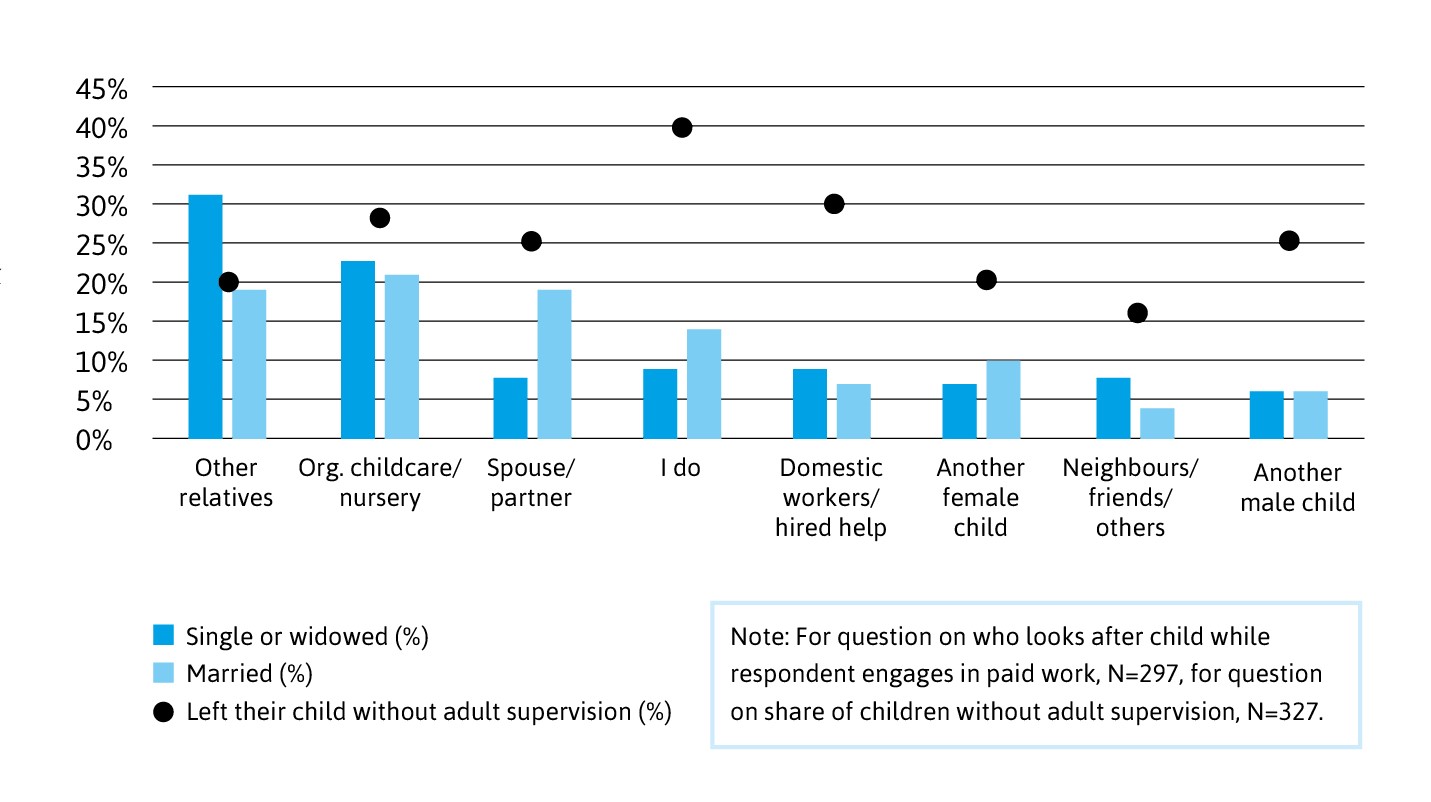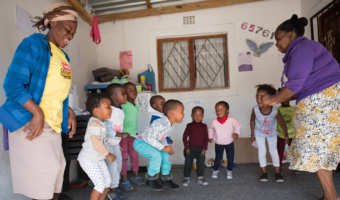‘I had to wake up early at 4 a.m. … I drop my child next door in her sleep and go to the train station. I have to take the early trains because trains delay and I end up being late for my booking. This is why I ended up leaving my child next door because no crèche opens at 4 a.m.’
Interviewer: ‘What happens if your neighbour is not available on that day?’
‘Ahhh unotorega kuenda kubasa kwacho [you end up not taking any booking at all]. This is why it’s difficult to have my child live with me.’
(Akumzi, Cape Town)
Akumzi works through an Uber-style digital platform in South Africa, which connects workers to households seeking to purchase domestic cleaning services. Proponents of ‘gig work’ argue that such platforms provide jobs, and may offer better working conditions in comparison to alternative prospects in large informal economies. They argue that gig work offers flexibility, enabling women, in particular, to balance paid work and unpaid care1. Our recent study of women’s experiences of on-demand gig work in Kenya and South Africa probed this claim (Hunt et al., 2019). It provided insights into the implications of gig work for caregiving.
We found that although many workers viewed gig work as more flexible than other paid work available to them, caring for young children proved challenging – not least given unpredictable schedules, early starts and long commutes2. The women we surveyed through a domestic work platform in South Africa3 employed numerous strategies to meet this challenge. In a context characterised by constraints to accessing formal care and fragmented family structures, they relied heavily on informal care networks, notably relatives (Figure 1).
The most worrying strategy in widespread use was to leave young children at home without adult supervision. Overall, 24% of our respondents reported having left a child under 5 years old alone for more than an hour in a given week, while a further 9% had left their child in the care of another child under 10 years old4.
Women who reported that they usually cared for their child themselves were most likely to leave a child without adult supervision, followed by those who engaged formal childcare or paid help. This points to shortcomings in formal care options as a high risk factor. Our interviews with workers reinforced this: they suggested that children were more likely to be left alone at times when these more formal options were not available, such as early mornings. Gig workers with unpredictable schedules also regularly chose not to use formal childcare services, such as a crèche, where fees were paid monthly.
There is also a high rate of children being left alone among those who might otherwise be cared for by a partner/spouse or another male child, suggesting that these options may not be consistent or reliable. The rate of left-alone children appears to be lowest for those reliant on: neighbours, friends or others; relatives; and other children (notably female children). These findings are limited by small sample sizes: the results are suggestive rather than indicative5. However, coupled with our qualitative fieldwork, they point to the importance of informal networks and family to support childcare – and the associated risks posed to children when these are not available.

FIGURE 1 Who looks after South African platform workers’ children while they engage in paid work and share of children left without adult supervision in a given week. Source: Hunt et al., 2019: 60.
These findings are clearly worrying and reinforce the need expressed by study participants for accessible high-quality childcare. They also sound a clarion call for a strong public action to promote public investment in care infrastructure and to insist that private companies, including those that argue that they are not employers, contribute their fair share.
References can be found in the PDF version of this article.
1 ‘[W]omen handle a disproportionate share of household work, child care, and care for elderly dependents, so flexible independent work helps them juggle these other responsibilities’ (Manyika et al ., 2016: 43).
2 The need for early starts and long commutes may be especially acute for gig workers. Early starts were necessitated by clients’ wanting to meet an (unknown) domestic worker prior to leaving for their own workplace, while commuting times were amplified where workers had to travel to undertake more than one gig on a given day.
3 N = 327. See Hunt et al . (2019) for details of our method – which included both a nine-round Automated Voice Response Survey with several hundred gig workers and in-depth interviews and focus group discussions with a small number of workers and other key informants.
4 There are no directly comparable data for the South African population. The only related information we identified is from the 2017 General Household Survey, which asks respondents where children under 6 are ‘during the day for most of the time’, if not in early education or formal childcare. Fewer than 0.5% of this group were reported to have been left with a person under 18 (computed from STATS SA, 2018).
5 A Kruskal-Wallis H test did not reveal statistically significant differences in whether a respondent was likely to leave a child alone in a given week, based on who usually cared for her child or children, X 2(7) = 7.085, p = 0.4201.




